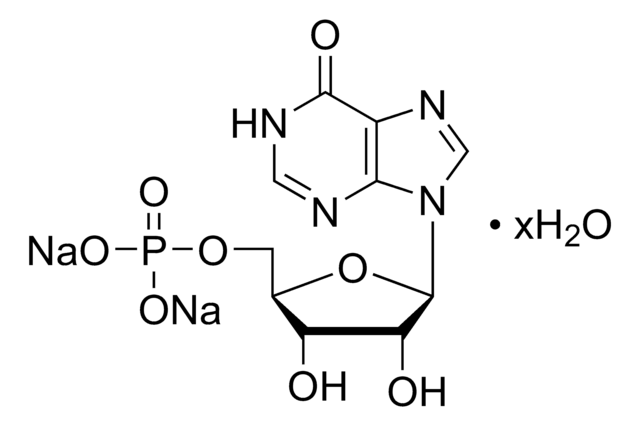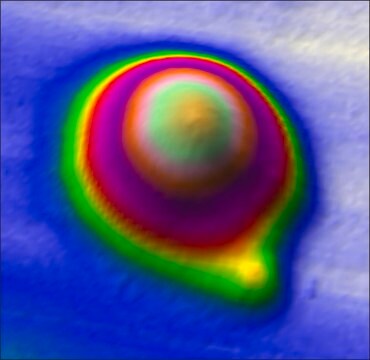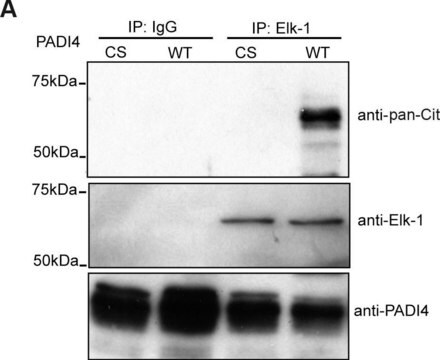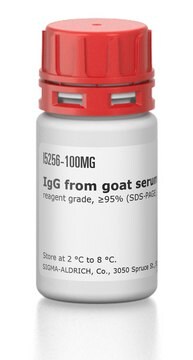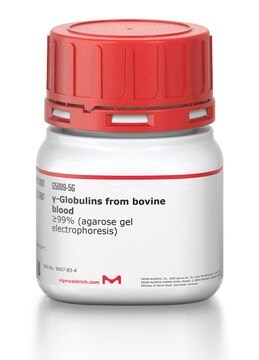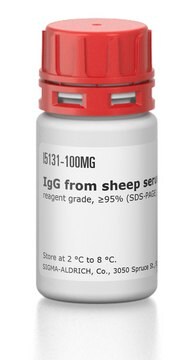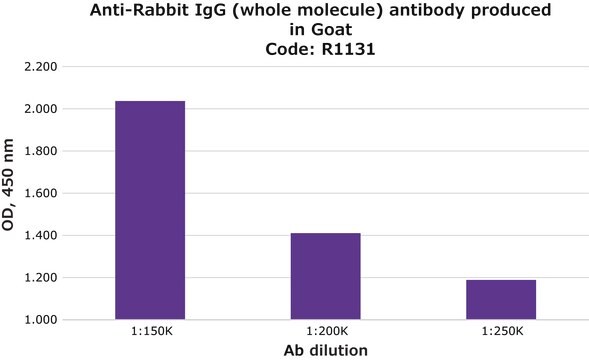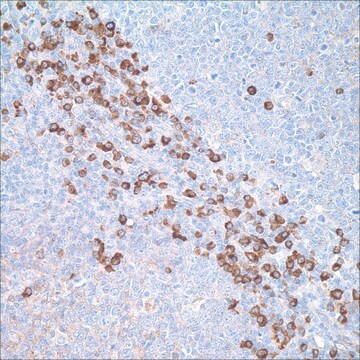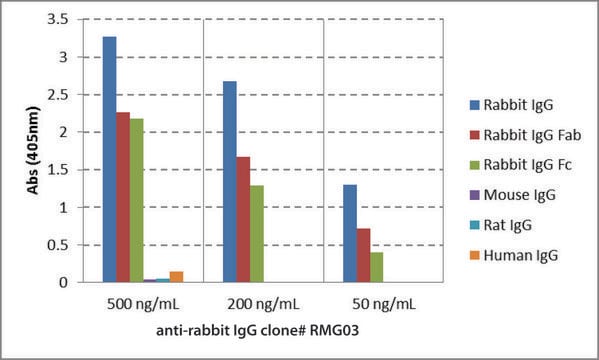I5006
IgG from rabbit serum
reagent grade, ≥95% (SDS-PAGE), essentially salt-free, lyophilized powder
Sinonimo/i:
Rabbit IgG
Autenticatiper visualizzare i prezzi riservati alla tua organizzazione & contrattuali
About This Item
Prodotti consigliati
Coniugato
unconjugated
Livello qualitativo
Grado
reagent grade
Saggio
≥95% (SDS-PAGE)
Forma fisica
essentially salt-free, lyophilized powder
Temperatura di conservazione
2-8°C
Cerchi prodotti simili? Visita Guida al confronto tra prodotti
Descrizione generale
IgG antibody subtype is the most abundant serum immunoglobulins of the immune system. It is secreted by B cells and is found in blood and extracellular fluids and provides protection from infections caused by bacteria, fungi and viruses. Maternal IgG is transferred to fetus through the placenta that is vital for immune defence of the neonate against infections
Rabbit IgG is purified from normal rabbit serum by fractionation and ion-exchange chromatography.
Rabbit IgG is purified from normal rabbit serum by fractionation and ion-exchange chromatography.
Applicazioni
Purified rabbit IgG may be used as a reference antigen, standard, blocking agent, or coating protein in a variety of immunoassays including ELISA, dot immunobinding, Western immunoblotting, immunodiffusion, and immunoelectrophoresis. Other applications include starting materials for the preparation of immunogens and solid phase immunoadsorbents. Rabbit IgG was used to reduce non-specific binding in immunoprecipitation of protein extracts and as control antibody in radioimmunoassay immunocytochemistry and immunohistochemistry. Rabbit IgG was also used as a standard to demonstrate the performance of land-contrast (LC) BioCD (protein array) and in neutralization assays.
Esclusione di responsabilità
Unless otherwise stated in our catalog or other company documentation accompanying the product(s), our products are intended for research use only and are not to be used for any other purpose, which includes but is not limited to, unauthorized commercial uses, in vitro diagnostic uses, ex vivo or in vivo therapeutic uses or any type of consumption or application to humans or animals.
Codice della classe di stoccaggio
11 - Combustible Solids
Classe di pericolosità dell'acqua (WGK)
WGK 3
Punto d’infiammabilità (°F)
Not applicable
Punto d’infiammabilità (°C)
Not applicable
Dispositivi di protezione individuale
Eyeshields, Gloves, type N95 (US)
Certificati d'analisi (COA)
Cerca il Certificati d'analisi (COA) digitando il numero di lotto/batch corrispondente. I numeri di lotto o di batch sono stampati sull'etichetta dei prodotti dopo la parola ‘Lotto’ o ‘Batch’.
Possiedi già questo prodotto?
I documenti relativi ai prodotti acquistati recentemente sono disponibili nell’Archivio dei documenti.
I clienti hanno visto anche
Land-contrast self-referencing interferometric protein microarray
Wang W et al
Applied Physics Letters, 93, 223904-223904 (2008)
Gisèle Dewhurst-Maridor et al.
Molecular biology of the cell, 28(20), 2637-2649 (2017-08-05)
Changes in cellular sterol species and concentrations can have profound effects on the transcriptional profile. In yeast, mutants defective in sterol biosynthesis show a wide range of changes in transcription, including a coinduction of anaerobic genes and ergosterol biosynthesis genes
Olivier Lepage et al.
The Journal of experimental biology, 206(Pt 20), 3589-3599 (2003-09-11)
Isolated juvenile rainbow trout were fed a feed supplemented with L-tryptophan (TRP) for 3, 7 or 28 days, after which they were either sampled directly (undisturbed) or subjected to a standardised stressor prior to sampling. Controls (stressed and undisturbed) received
Ping Li et al.
PLoS genetics, 13(6), e1006830-e1006830 (2017-06-14)
Centrosomes organize microtubules and are essential for spindle formation and chromosome segregation during cell division. Duplicated centrosomes are physically linked, but how this linkage is dissolved remains unclear. Yeast centrosomes are tethered by a nuclear-envelope-attached structure called the half-bridge, whose
Mehdi Hichor et al.
Antioxidants & redox signaling, 27(3), 168-183 (2016-10-30)
Paraquat (PQT), a redox-active herbicide, is a free radical-producing molecule, causing damage particularly to the nervous system; thus, it is employed as an animal model for Parkinson's disease. However, its impact on peripheral nerve demyelination is still unknown. Our aim
Il team dei nostri ricercatori vanta grande esperienza in tutte le aree della ricerca quali Life Science, scienza dei materiali, sintesi chimica, cromatografia, discipline analitiche, ecc..
Contatta l'Assistenza Tecnica.

